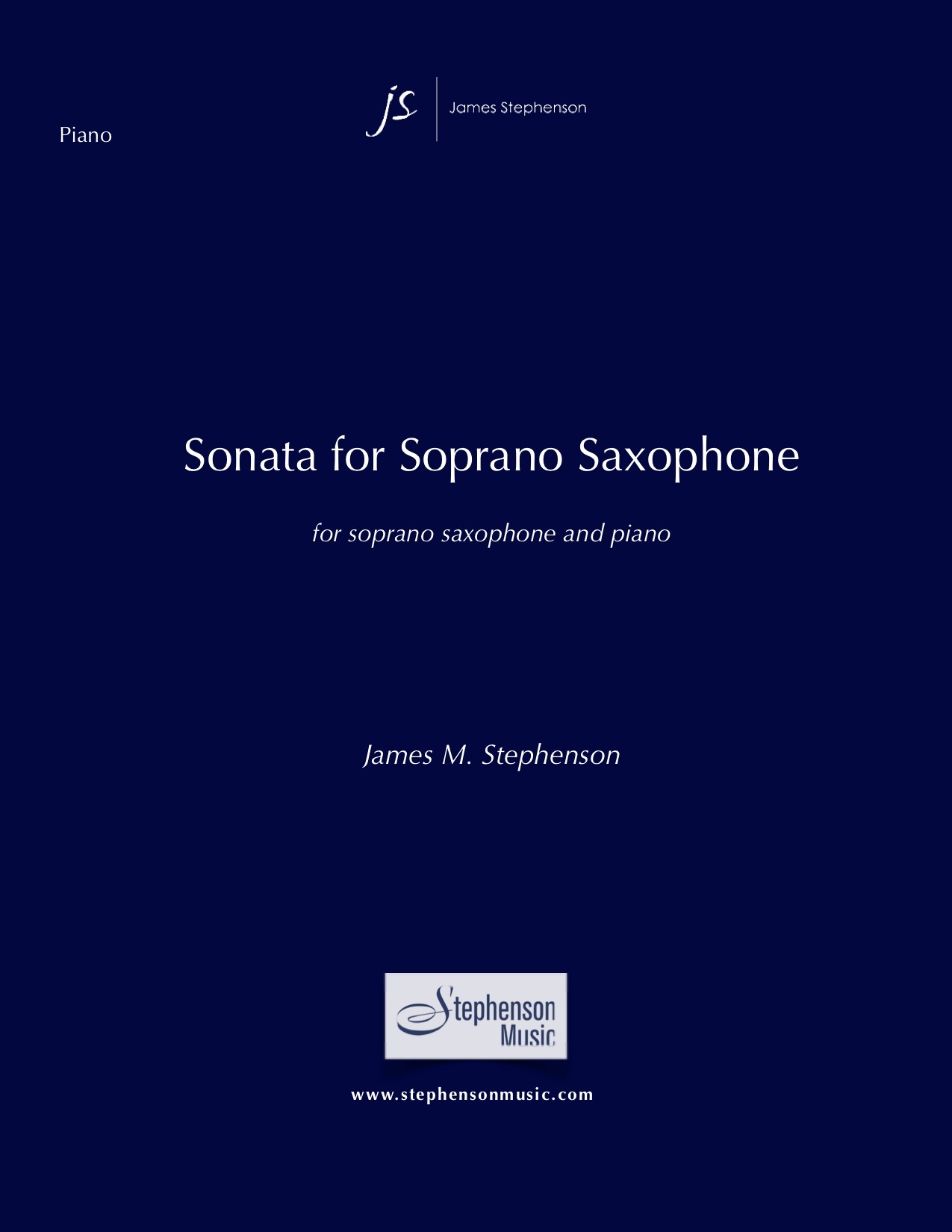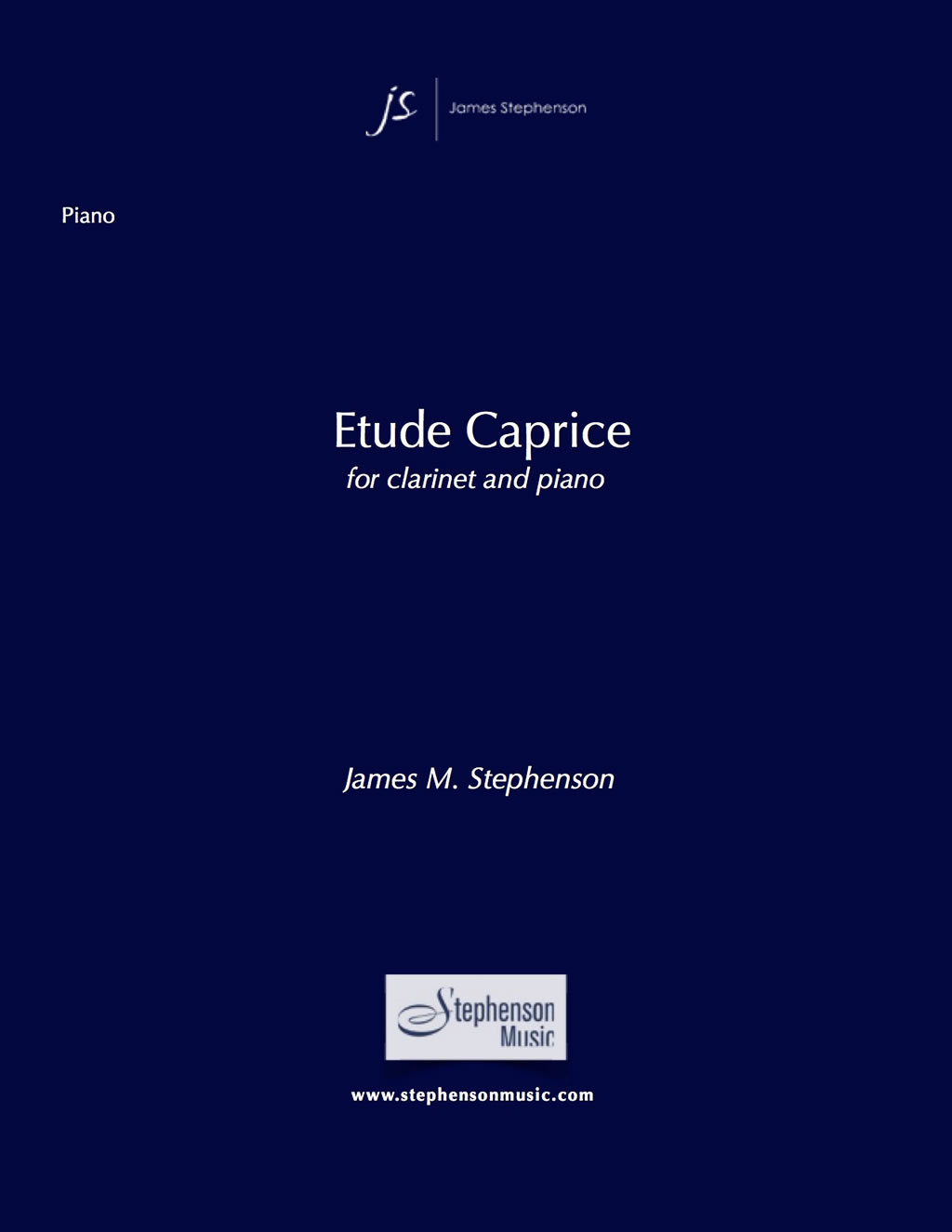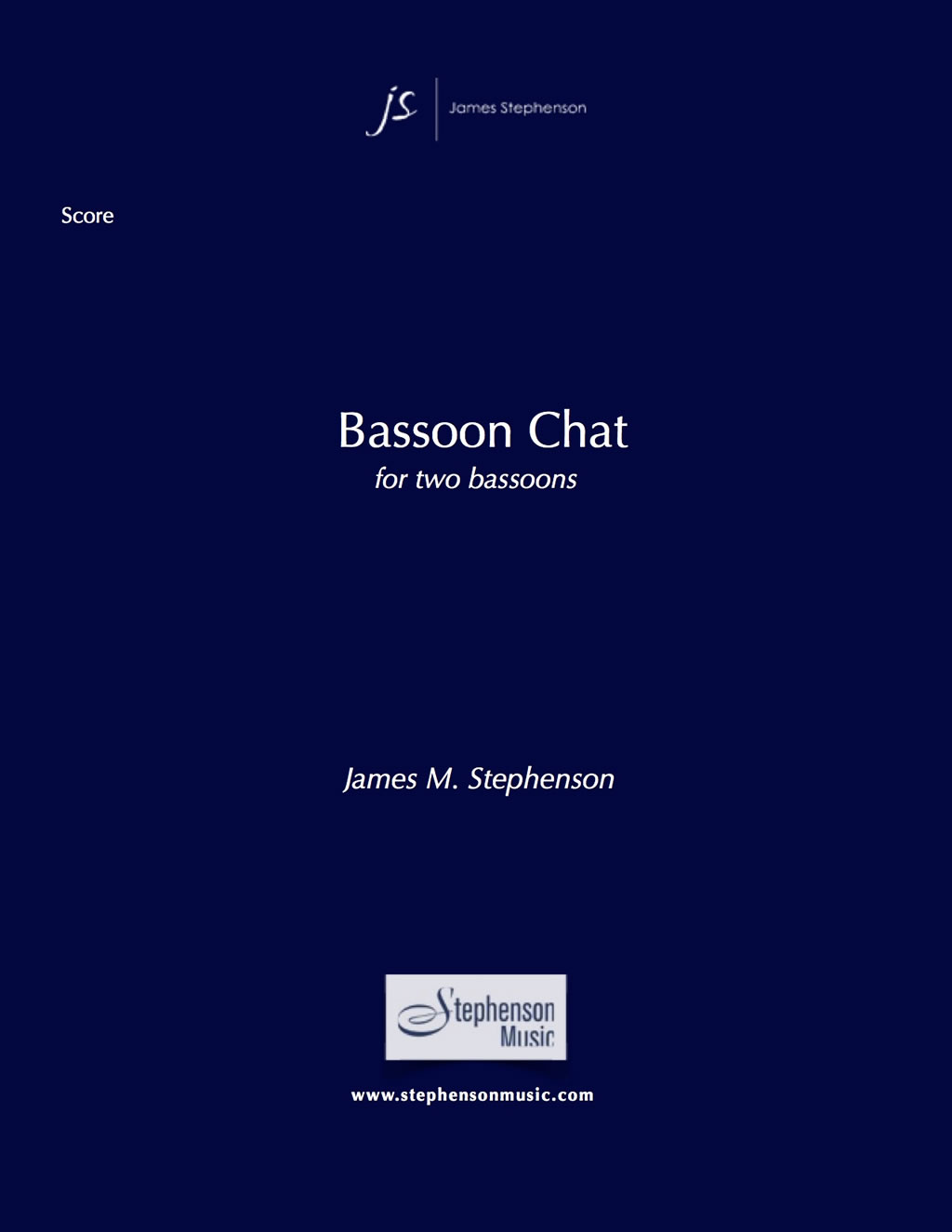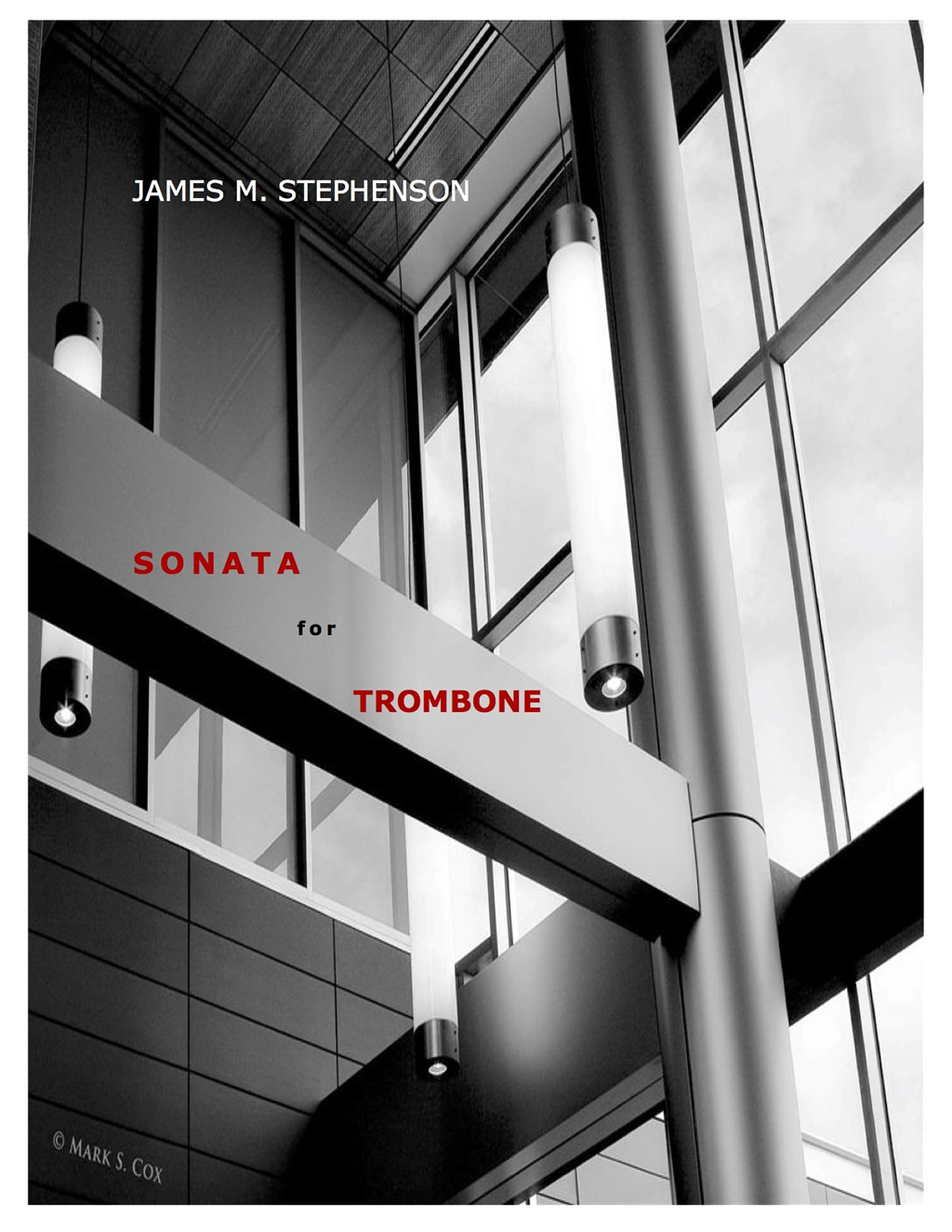Description
Sonata for Soprano Saxophone and Piano by James M. Stephenson
(Originally written for oboe and piano)
Transcribed for soprano saxophone on 11/29/18, at the encouragement of Steve Carmichael
Duration: 15’
original oboe sonata program notes by the composer:
In the winter of 2014, I was asked to step in and guest-conduct a local youth orchestra. In the effort to familiarize the young musicians with the concept that “all composers are not dead”, I shared with them the fact that I was a real-life, full-time composer, who actually makes his living staying at home and writing music all day. As expected (with youngsters), there were no “oohs” nor “aahs”, nor any sign of light-bulbs going on, so we just continued on with our work and the task at hand. However, upon completion of the rehearsal, I was approached by one of the parents, who was sitting in the back of the room, and we struck up a conversation. Apparently he had been listening to my story, and was curious about my life as a composer.As an professional inventor himself, we shared similarities in our life’s passions.
The conversation with Mr. Doug Williams went even further, and imagine my surprise and delight when he approached me with the idea of writing a new work.The project was so compelling (to me, at least), that I immediately agreed to it, and the idea of the oboe sonata was born.The piece was to be for his older daughter, as a gift upon her graduation from Juilliard.As a parent myself, I could not think of a better gift to a child.This piece is dedicated, with pleasure, to Doug Williams, and his daughter, Lauren.Thank you for your unique and giving spirit, and for furthering the idea of new music being invented!
About the music:
The sonata is similar in form to that of the Poulenc oboe sonata (one of Doug’s favorites): slow- fast-slow.The first movement itself, however, has an internal form of slow-fast-slow, mirroring the larger picture.An octave-leap motif initiates the piece, and becomes a central figure throughout the work. In mirror-image to the first movement, the second movement has an internal structure of fast-slow-fast.The movement is a showcase for both players – as sonatas ought to be – and is meant to highlight both the technical and lyrical attributes of the soloists.The third movement is a chorale-like dirge. It is marked “funereal” – mainly for purposes of tempo. It is not as morbid as the tempo-marking suggests, but certainly carries a sense of longing. It finally resolves in E major – a key suggested throughout, but never fully realized.
Jim Stephenson;April, 2014
Additional information
| Duration | |
|---|---|
| Featured Instrument | |
| Type of Purchase | |
| Type of Work |





